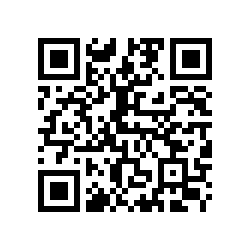Analisis Adaptasi Technology Acceptance Model (TAM) Food Delivery Service pada Pedagang Mitra Go-Food di Kecamatan Sidorejo Kota Salatiga
(1) Universitas Kristen Satya Wacana, Indonesia
(2) Universitas Kristen Satya Wacana, Indonesia
(3) Universitas Kristen Satya Wacana, Indonesia
(*) Corresponding Author
Abstract
Full Text:
PDFReferences
Lembaga Demografi, “Peran Ekosistem Digital Gojek di Ekonomi Sebelum dan Saat Pandemi Covid-19,” Depok, 2020.
PintarUMKM, “Statistik PintarUMKM,” 2023. [Online]. Available: https://pintarumkm.salatiga.go.id/statistik.
M. Nikola and A. Granić, Technology Acceptance Model: A Literature Review from 1986 to 2013. Berlin: Springer: Universal Access in The Information Society, 2014.
Renny, S. Guritno, and H. Siringoringo, “Perceived Usefulness, Ease of Use, and Attitude Towards Online Shopping Usefulness Towards Online Airlines Ticket Purchase,” Procedia-Social Behav. Sci., vol. 81, pp. 212–216, 2013, [Online]. Available: https://doi.org/10.1016/j.sbspro.2013.06.415.
A. Hussain and E. Mkpojiogu, “Perceived Usefulness, Perceived Ease of Use and Perceived Enjoyment as Drivers for The User Acceptance of Interactive Mobile Maps,” in AIP Conference Procceedings, 2016, p. 1761, doi: 10.1063/1.4960891.
V. Venkatesh, “Technology Acceptance Model 3 and a Research Agenda on Interventions,” Decis. Sci., vol. 39, no. 2, pp. 273–315, 2008, doi: 10.1111/j.1540-5915.2008.00192.x.
W. A. Perangin-angin, A. D. Respati, and M. D. Kusumawati, “Pengaruh Perceived Usefulness dan Perceived Ease of Use terhadap Attitude Toward Using E-Faktur,” J. Res. Econ. Manag., vol. 16, no. 2, pp. 307–322, 2016, doi: 10.17970/jrem.16.1602010.ID.
E. I. Tyas and E. S. Darma, “Pengaruh Perceived Usefulness, Perceived Ease of Use, Perceived Enjoyment, dan Actual Usage Terhadap Penerimaan Teknologi Informasi: Studi Empiris Pada Karyawan Bagian Akuntansi dan Keuangan Baitul Maal Wa Tamwil Wilayah Daerah Istimewa Yogyakarta,” Reviu Akunt. dan Bisnis Indones., vol. 1, no. 1, pp. 25–35, 2017, doi: https://doi.org/10.18196/rab.010103.
B. Santoso, “Pengaruh Perceived Usefulness, Perceived Ease of Use dan Perceived Enjoyment terhadap Penerimaan Teknologi Informasi (Studi Empiris di Kabupaten Sragen),” Surakarta, 2010.
S. T. Muntianah, “Pengaruh Minat Perilaku terhadap Actual Use Teknologi Informasi dengan Pendekatan Technology Acceptance Model (TAM) (Studi Kasus pada Kegiatan Belajar Mahasiswa Fakultas Ilmu Administrasi),” Profit, vol. 6, no. 1, pp. 88–113, 2012.
R. Aditya and A. Wardhana, “Pengaruh perceived usefulness dan perceived ease of use terhadap behavioral intention dengan pendekatan Technology Acceptance Model (TAM) pada pengguna Instant Messaging LINE di Indonesia,” J. Siasat Bisnis, vol. 20, no. 1, pp. 24–32, 2016, [Online]. Available: https://doi.org/10.20885/jsb.vol20.iss1.art3.
C. B. Lee and G. Wan, “Customer Perceptions of E-Service Quality in Online Shopping,” Int. J. Retail Distrib. Manag., vol. 33, no. 2, 2010.
R. N. S. Koloay, “Dampak Positif dan Negatif dalam Tukar Guling Barang Milik Daerah,” J. Ilmu Huk., vol. 3, no. 8, p. 39, 2016.
DOI: https://doi.org/10.30645/kesatria.v6i2.594
DOI (PDF): https://doi.org/10.30645/kesatria.v6i2.594.g589
Refbacks
- There are currently no refbacks.
Published Papers Indexed/Abstracted By:














